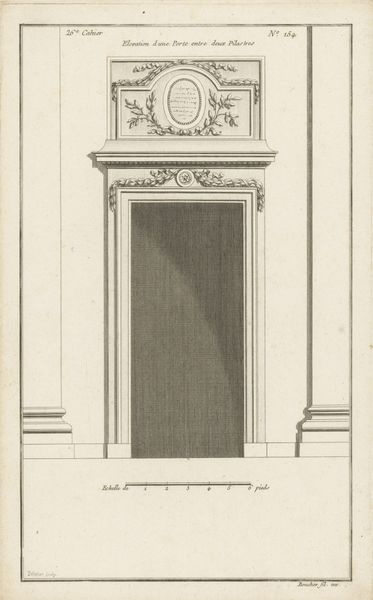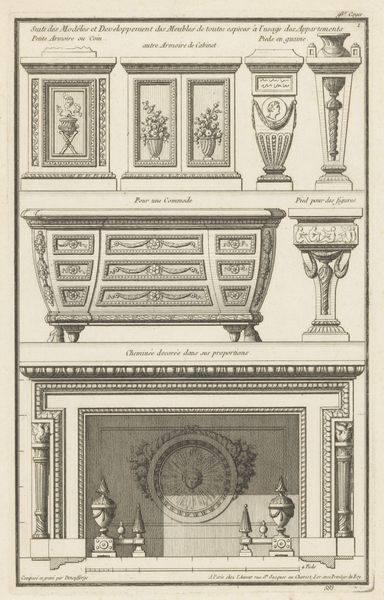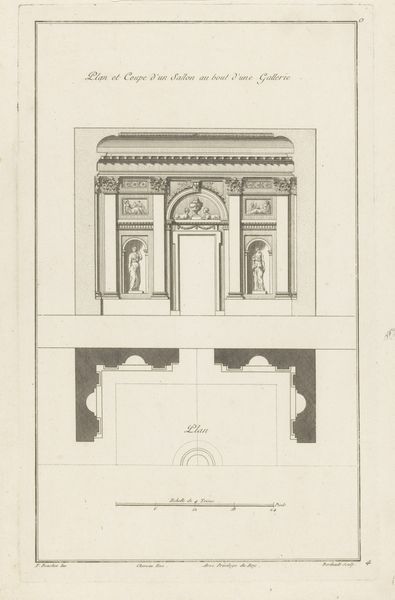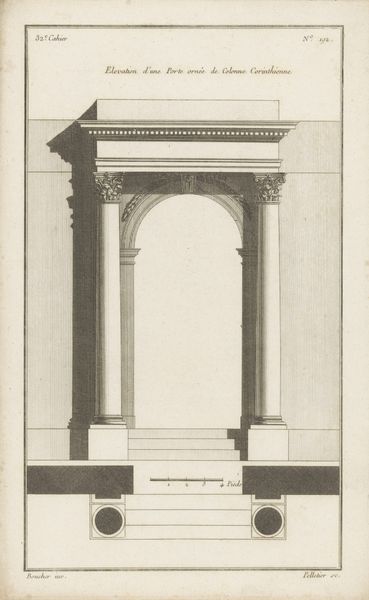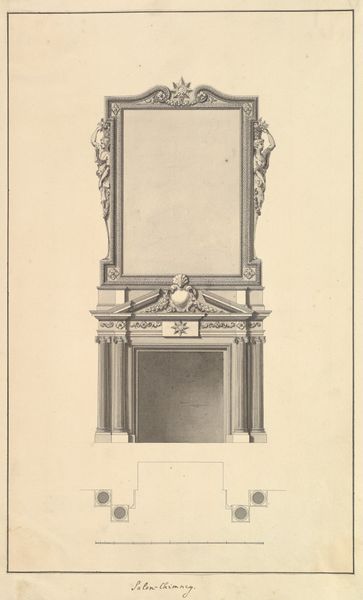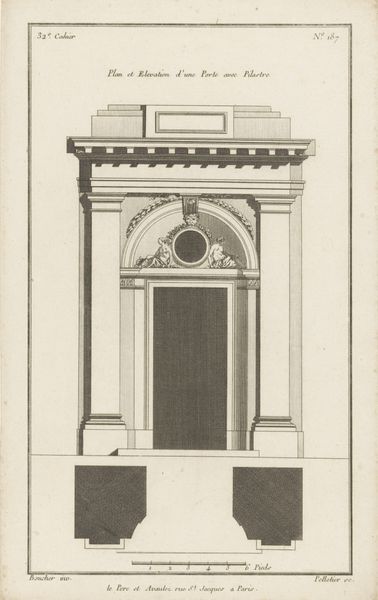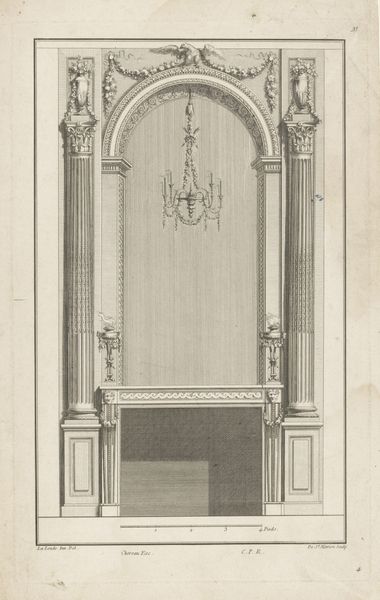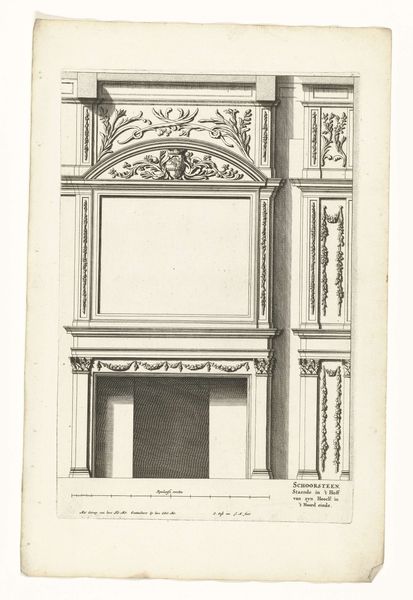
drawing, print, engraving, architecture
#
drawing
#
neoclacissism
# print
#
classical-realism
#
form
#
column
#
arch
#
line
#
cityscape
#
engraving
#
architecture
Dimensions: height 361 mm, width 224 mm
Copyright: Rijks Museum: Open Domain
Curator: Let's discuss "Galerij met rondboog" by Pierre Gabriel Berthault, a drawing and engraving print dating from between 1752 and 1794 here at the Rijksmuseum. Editor: The first thing that strikes me is its air of calculated precision. The whole thing feels like a stage set, meticulously planned but somehow devoid of life, like an abandoned architectural rendering waiting to be filled with narrative. Curator: Indeed. This work exemplifies Neoclassicism's embrace of order and reason, reflecting Enlightenment ideals. Look at the deliberate use of classical motifs—the columns, arches, and the carefully placed statues. This isn't merely a depiction of a gallery, it's a statement about power, intellectualism, and control. In the social and political climate of pre-revolutionary Europe, such structures were designed to awe. Editor: You're right about the symbolic weight of those classical forms. The arch, for instance, is repeated, creating an echo of Roman grandeur. The statues positioned within suggest figures of authority, virtue or ideal beauty that all reinforce existing notions about hierarchies. Curator: Absolutely. And note how the very style reinforces this message. The sharp, clean lines and lack of overt emotion in the drawing communicate a sense of unwavering certainty. However, consider also the function of such prints: how did these plans disseminate new forms and thus social possibilities beyond elite circles? Editor: That's a critical point. Beyond the surface, this print may carry subconscious meanings, as it speaks to power but could also be perceived as an unattainable dream for some people. The classical forms signify both enlightenment and possible social restriction. Curator: Precisely. And those classical visual elements resonate powerfully across eras, reminding us of humanity's perpetual striving towards ideal forms of governance. Editor: It makes you wonder about how we understand progress now. Seeing how the old symbols keep on living and shaping contemporary society.
Comments
No comments
Be the first to comment and join the conversation on the ultimate creative platform.
